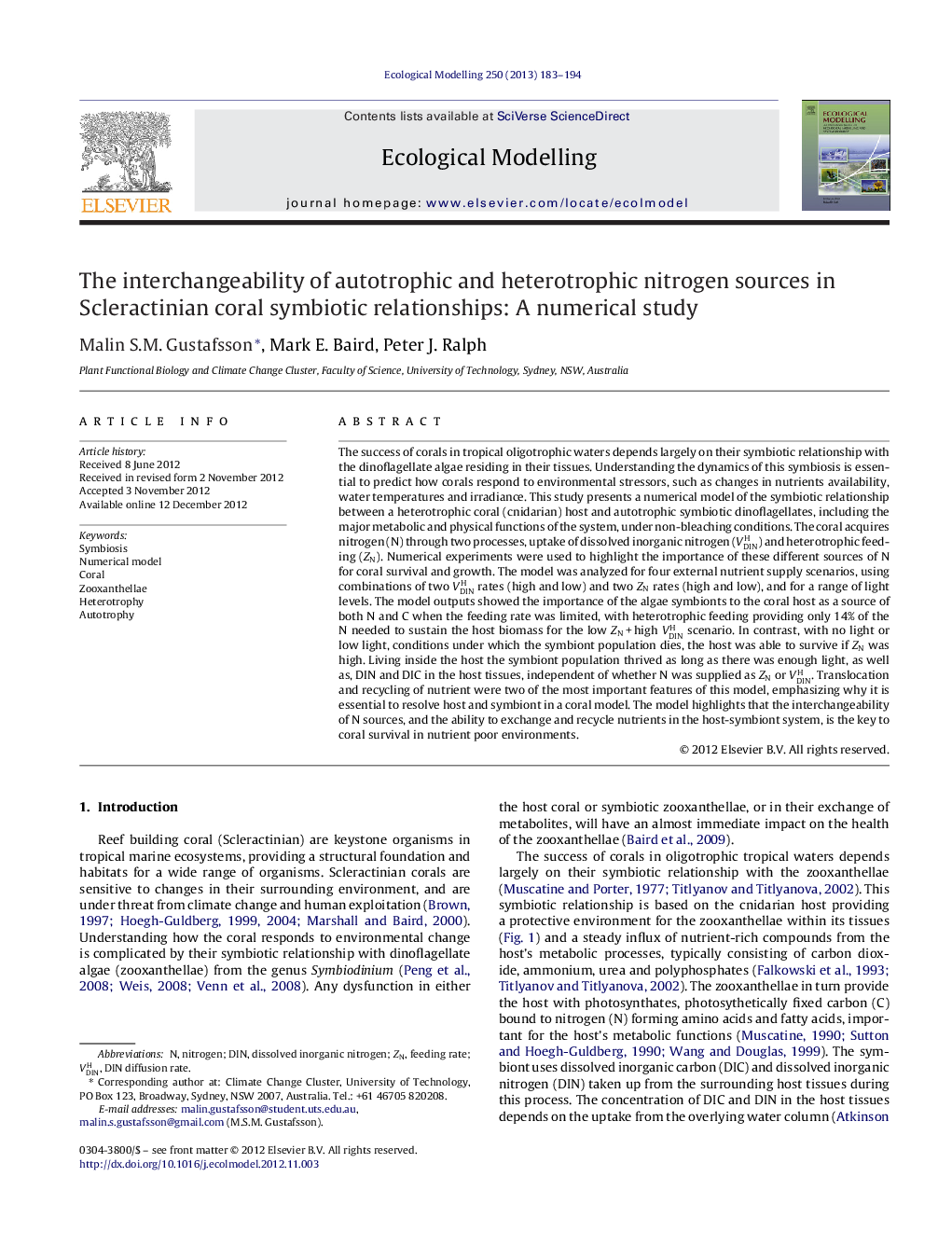| کد مقاله | کد نشریه | سال انتشار | مقاله انگلیسی | نسخه تمام متن |
|---|---|---|---|---|
| 4376248 | 1617495 | 2013 | 12 صفحه PDF | دانلود رایگان |

The success of corals in tropical oligotrophic waters depends largely on their symbiotic relationship with the dinoflagellate algae residing in their tissues. Understanding the dynamics of this symbiosis is essential to predict how corals respond to environmental stressors, such as changes in nutrients availability, water temperatures and irradiance. This study presents a numerical model of the symbiotic relationship between a heterotrophic coral (cnidarian) host and autotrophic symbiotic dinoflagellates, including the major metabolic and physical functions of the system, under non-bleaching conditions. The coral acquires nitrogen (N) through two processes, uptake of dissolved inorganic nitrogen (VDINH) and heterotrophic feeding (ZN). Numerical experiments were used to highlight the importance of these different sources of N for coral survival and growth. The model was analyzed for four external nutrient supply scenarios, using combinations of two VDINH rates (high and low) and two ZN rates (high and low), and for a range of light levels. The model outputs showed the importance of the algae symbionts to the coral host as a source of both N and C when the feeding rate was limited, with heterotrophic feeding providing only 14% of the N needed to sustain the host biomass for the low ZN + high VDINH scenario. In contrast, with no light or low light, conditions under which the symbiont population dies, the host was able to survive if ZN was high. Living inside the host the symbiont population thrived as long as there was enough light, as well as, DIN and DIC in the host tissues, independent of whether N was supplied as ZN or VDINH. Translocation and recycling of nutrient were two of the most important features of this model, emphasizing why it is essential to resolve host and symbiont in a coral model. The model highlights that the interchangeability of N sources, and the ability to exchange and recycle nutrients in the host-symbiont system, is the key to coral survival in nutrient poor environments.
► We model coral symbiosis; between a heterotrophic host and an autotrophic symbiont.
► High feeding rates allow the host to survive in the absence of their symbiont.
► If feeding is reduced the host becomes increasingly dependent on the symbiont.
► The symbiont thrives as long as there is DIN available from metabolism or diffusion.
► The model shows the importance of having two N-sources for a symbiotic coral.
Journal: Ecological Modelling - Volume 250, 10 February 2013, Pages 183–194